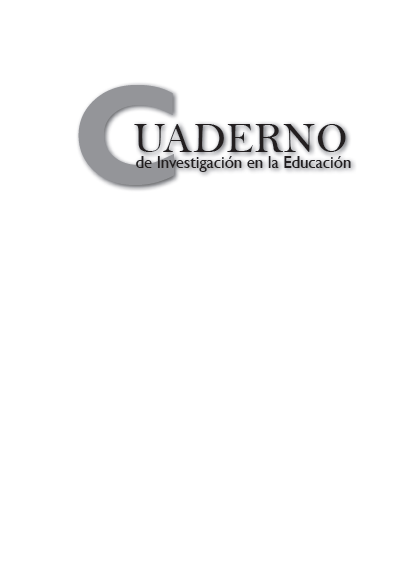Abstract
Assessment, from the constructivist perspective, needs to respond to the children and their particularities. It must be a meaningful and continuous process that considers their diverse socio- cultural contexts and is connected to the learning process. It should evidence the holistic development of the child through the incorporation of a variety of strategies and instruments. The competent preschool intentional teacher knows and systematically incorporates appropriate assessment processes, even in the midst of a sociopolitical context characterized by national and international tendencies that emphasize a rigid accountability and, consequently, standardized tests for the evaluation of the children and the education programs. This article elaborates the topic of assessment in early childhood education and proposes the incorporation of the child‘s portfolio as an authentic and appropriate assessment alternative for preschoolers.
How to cite
Pedraza-Burgos, L., & Mendoza-Bas, M. L. (2012). El portafolio: Una alternativa apropiada para el avalúo en la educación temprana. Cuaderno de Investigación en la Educación, 27, 136-150. Retrieved from https://revistas.upr.edu/index.php/educacion/article/view/13564
References
Armstrong, T. (2001). Inteligencias múltiples: Cómo descubrirlas y estimularlas en sus hijos. Colombia: Norma.
Bredekamp, S. & Rosegrant, T. (Eds.). (1992). Reaching potentials: Appropriate curriculum and assessment for young children (Vol. I). Washington, DC: National Association for the Education of Young Children.
Copple, C., & Bredekamp, S. (Eds.) (2009). Developmentally Appropriate Practice in early childhood programs serving children from birth through Age 8 (3ra. ed.).Washington, DC: National Association for the Education of Young Children.
Dahlberg, G. & Moss, P. (2005). Ethics and politics in early childhood education. London: Routledge-Falmer.
Dahlberg, G., Moss, P., & Pence, A. (2007). Beyond quality in early childhood education and care: Languages of evaluation (2da. ed.). London: Falmer.
Dewey, J. (2009). Democracy and education: An introduction to the philosophy of education. Lexington, KY: USA.
Epstein, A. S. (2007). The Intentional Teacher: Choosing the best strategies for young children´s learning. Washington, DC: National Association for the Education of Young Children.
Hanson, M. F. & Gilkerson, D. (1999). Portfolio assessment: More than ABCs and 123s. Early Childhood Education Journal, 27(2), 81-86.
Jones, J. (2004). Framing the assessment discussion. Young Children, 59(1), 14-18.
Jones, M. & Shelton, M. (2006). Developing your portfolio: enhancing your learning and showing your stuff. New York: Routledge.
Martin, S. (1994). Take a look: Observartion and portfolio assessment in early childhood. New York: Addison Wesley Publishers.
Martínez Ramos, L. M. (2006). "No Child Left Behind" o la seducción del discurso. Pedagogía, 39(1), 58-79.
Torrech San Inocencio, L. & Martínez Miranda, L. (2010). Juego, investigo, descubro y aprendo: Currículo preescolar integral, emergente y transformativo. San Juan, PR: Ediciones SM.
National Association for the Education of Young Children (2007). NAEYC early childhood program standard and accreditation criteria: The mark of quality in early childhood education. Washington, DC: NAEYC.
National Research Council & Institute of Medicine. (2000). From neurons to neighborhoods: The science of childhood development. Washington, DC: National Academy Press.
Osterman, K. (1998). Using constructivism and reflective practice to bridge theory and practice. Paper presented in the Annual Meeting of the American Educational Research Association. San Diego, CA.
Project Zero, Cambridgeport School, Cambridgeport Children‘s Center, Ezra H. Baker School, & John Simpkins School (2003). Making teaching visible: Documenting individual and group learning as professional development. Cambridge, Massachussets: Project Zero, Harvard University Graduate School of Education.
Project Zero & Reggio Children (2001). Making learning visible: Children as individual and group learners. Reggio Emilia, Italia: ReggioChildren.
Sapientis. (2011). El estado actual de las escuelas públicas en plan de mejoramiento en Puerto Rico, año escolar 2010-2011. Informe presentado el 13 de octubre de 2011, en el Día de la Legislatura Sapientis.
Seitz, H. & Bartholomew, C. (2008). Powerful portfolios for young children. Early Childhood Education Journal, 36, 63-68.
The White House Office of the Press Secretary (2011, 23 de septiembre). Obama Administration sets high bar for flexibility from No Child Left Behind in order to advance equity and support reform. Statement and Releases. Recuperado de http://www.whitehouse.gov/the-press-office/2011/09/23/obama-administration-setshigh-bar-flexibility-no-child-left-behind-order
Vázquez Pérez, C., & Bonilla Rodríguez, V. E. (2006). Necesidad del estudio de impacto de la Ley "No Child Left Behind". Pedagogía, (39)1, 29-57.
Verdejo, A., & Medina, M. (2008). Evaluación del aprendizaje estudiantil (4ta ed. aumentada). San Juan, Puerto Rico: Isla Negra Editores.
The contents published in the Puerto Rico Journal of Education is freely distributed under open access practices, in accordance with the Creative Commons license, Attribution-NonCommercial 4.0 International (CC BY-NC 4.0). Through these principles, the journal and its authors allow readers to access, reproduce and share articles in full text. Users should give credit to authors in a reasonable way without suggesting they have their support. Under no circumstances, readers may make use of the contents for commercial purposes. The authors retain copyright on their works.

